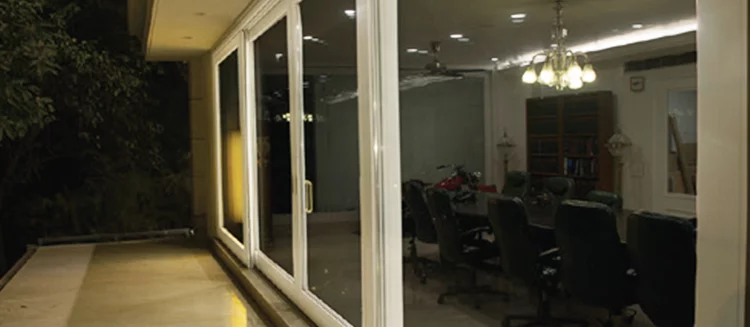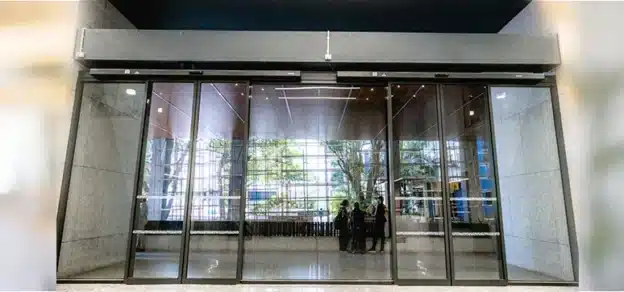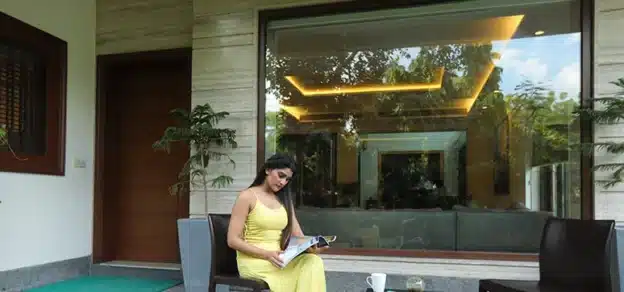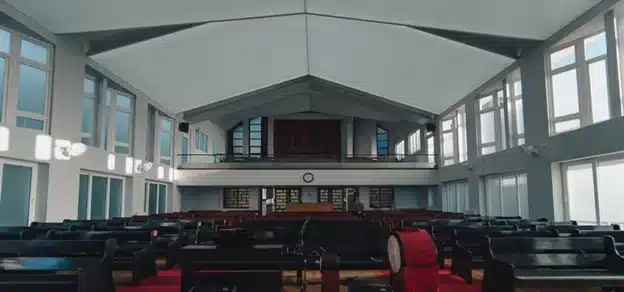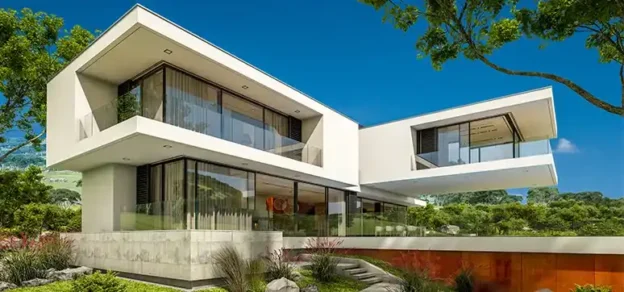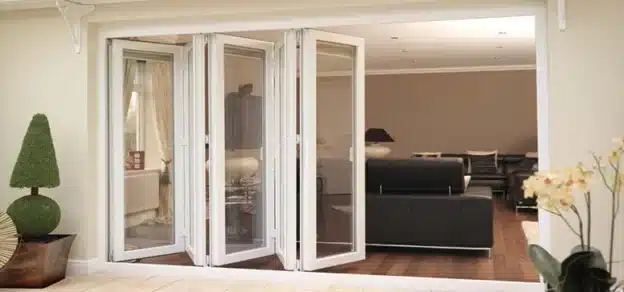Wood has been the preferred material for making doors and windows of the houses. But in the last few years wood windows have lost their charm because of numerous problems like jamming, warping, not being weatherproof, prone to termites, fungus and decay, etc., due to the ordinary design, manufacturing and finishing methods. Because of these problems, more and more people are looking at alternatives like uPVC or aluminium windows. The problem with these types of materials is that one cannot get the rich feel and grace of wood. Therefore, these materials are only popular at the lower end of buyers. The high-end houses that want a rich look and feel still prefer wood windows despite all the flaws.
Wooden windows in India are done in a very traditional way. These are fabricated on-site by the local woodworking craftsmen using conventional tools. The wood is procured from local wood suppliers and then left in open to season naturally. Then a very basic frame and sash design is made using hand tools and some basic wood-working machinery. In the current social environment, we are exposed to many dangers such as break-ins, and severe weather conditions- intense hot, cold and earthquakes.
Disadvantages of the Traditional Wood
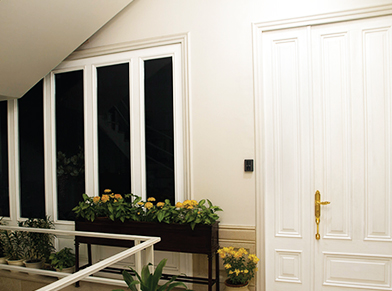
If one looks at the traditional wood window design and manufacturing process, one will see that it is very basic and has not evolved in several decades. Over the decades, some traditional hand tools have been replaced by a few machines, but the design and construction have remained very basic. Since the windows are usually fabricated and finished by local contracting teams, there are no guarantees/warranty on the same. So despite spending good money in getting these systems made, the customer is left with no option to live with sub-standard products and high maintenance costs.
Advantages of the New Engineered Technique
There is a lot of engineering done in the West to overcome the issues with normal wood. This technique is new in India for now, but engineered wood offers a single solution for all these problems because the doors and windows created with the technology are heatproof, weatherproof, break-in proof, soundproof, termite proof, jamming proof and dust proof. Engineered wooden doors and windows are manufactured in such a way that the typical problems associated with wood are taken care of. Their manufacturing process is a complete shift from the traditional method of fabrication of windows. Home is our sanctuary and engineered wood systems secure our home by dealing with unwelcome conditions.
From Procurement to Manufacturing and Finishing
Factors to Study Before Procuring the Wood:
To ensure that wood doesn’t lose its real value, it is very important to understand the minutes of wood. While engineering the wood, there are several points that have to be taken care of like as:
- Age of the timber i.e. how old the wood is, its moisture retaining capacity, examining whether it is seasoned properly or not etc.
- The cutting style of the wood also matters, the wood that is cut in the right pattern is most suitable for making doors and windows.
Process of Manufacturing:
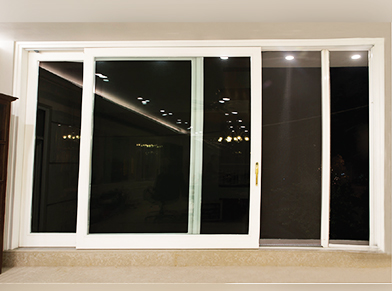 The manufacturing process is a complete shift from the traditional method of fabrication of windows.
The manufacturing process is a complete shift from the traditional method of fabrication of windows.
Certified seasoned wood is sourced from well-managed forests. Then the wood is further engineered to make multi-layer sections that result in structurally stable wood. With that wood does not expand or shrink much with changing weather.
Engineered wood doors and windows tend to perform better as they have higher load-carrying abilities compared to solid wood of the same dimension. This is because engineered wood and doors have more uniform and predictable structural properties, as the usual deficiencies in the wood(like knots and cracks) are either removed or offset by the manufacturing process.
Then systems are fabricated on computer-controlled machines to a very high degree of precision and assembled using very high-quality exterior-grade glue. This ensures that the joints do not open up ever.
All the systems are designed to accommodate insulated double glass units and are fitted with weather seals to ensure perfect closing and excellent thermal, air, water and dust performance.
Finishing the End Engineered Product:
After that, the wood passes through the finishing process that involves 4-6 coats of premium water-based exterior grade coatings. Multiple layers of water-based coating ensure that the wood is nicely protected from the elements and yet the coating is flexible enough to allow the wood to move and breathe freely.
This coating lasts a very long time with very little maintenance. Once the coatings are applied, the systems are then fitted with insulated double glass units, modern hardware and seals all around to give excellent locking and sealing capabilities.
Guaranteed Performance and a Unique Mesh Integration
Engineered wood doors and windows can last up to 10 years in terms of functional performance and the finishes can stay for at least 5 years without wearing out. Hence it is evident that with the engineered wood technique, wood doors and windows can have a better performance and durability for wood lovers.
Besides, this technique also promises the customers a provision of concealed insect mesh. In traditional systems, there is an additional mesh sash that is always visible. But with the engineered wood technique the doors and windows are installed in such a way that all the meshes remain concealed while the system is shut. So one can only take out the mesh when they open the system. Customers can enjoy unrestricted clear outside view through the glass when the system is shut and a unique mesh protection against gathering unwanted dust over the surface of their systems.
An Eco-Friendly Alternative
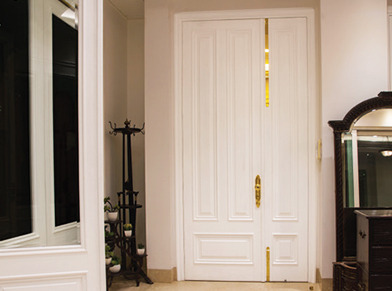
On its own, wood is a renewable resource. However, the list of benefits continues to grow when it undergoes the process to become an engineered wood product.
In addition to the benefits of wood as a renewable material, a building using engineered wood products sequesters carbon and can enhance the performance of the building, especially in energy use. Wood has natural thermal properties, which greatly reduce heat transfer. While many materials transmit heat easily, wood does not due to its structure.
The resins used in structural products are stable in use and do not produce gas. Despite the added energy needed to produce the product, as well as the resin and heat needed to cure and process it, engineered wood products sequester a lot of carbon. As most engineered wood doors and windows result in a higher density, carbon-intense wood products sequester equivalent carbon dioxide, resulting in ante negative carbon footprint.
Additionally, engineered products preserve or extend the use of forest resources by using a higher percentage of fibre, which previously was burned or left to rot. The use of wood from residual sources, plantations and second-growth forests reduces the pressure to harvest more forest area.
